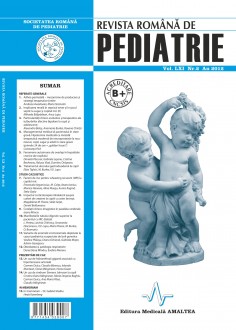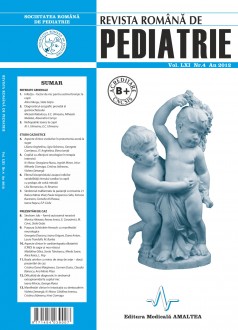SELECT ISSUE

Indexed

| |

|
|
|
| |
|
|
|

|
|
|
|
|
|
|
HIGHLIGHTS
National Awards “Science and Research”
NEW! RJP has announced the annually National Award for "Science and Research" for the best scientific articles published throughout the year in the official journal.
Read the Recommendations for the Conduct, Reporting, Editing, and Publication of Scholarly work in Medical Journals.
The published medical research literature is a global public good. Medical journal editors have a social responsibility to promote global health by publishing, whenever possible, research that furthers health worldwide.
A case of Stevens Johnson syndrome in child
Cristina Oana Mărginean, Maria Despina Baghiu, Carmen Duicu, Ana Maria Pitea and Claudiu Mărginean
ABSTRACT
We present a 9-year-old boy with epilepsy refractory to previous treatment diagnosed with Stevens Johnson syndrome appeared after the introduction of Lamictal in treatment. The boy had fever, polymorphous exanthema, papulopustular erythematous, bullous generalized vesiculobullous elements and skin denudation, conjunctivitis, mouth lesions. We have interpreted the associated pneumonia as a damage of a lower respiratory tract mucous membranes within Stevens Johnson syndrome. The evolution of the disease was favourable after high doses of Ig IV (intravenous immunoglobulin). In conclusion, even if the Steven Johnson syndrome incidence is low in children, pediatricians should be aware of the possibility of its reggresion (even after antiepileptics - Lamictal), and even if the use of Ig IV is controversial, it leads to healing when is given in high doses.
Key words: Stevens Johnson syndrome, child, epilepsy, Lamotrigine (Lamictal)

